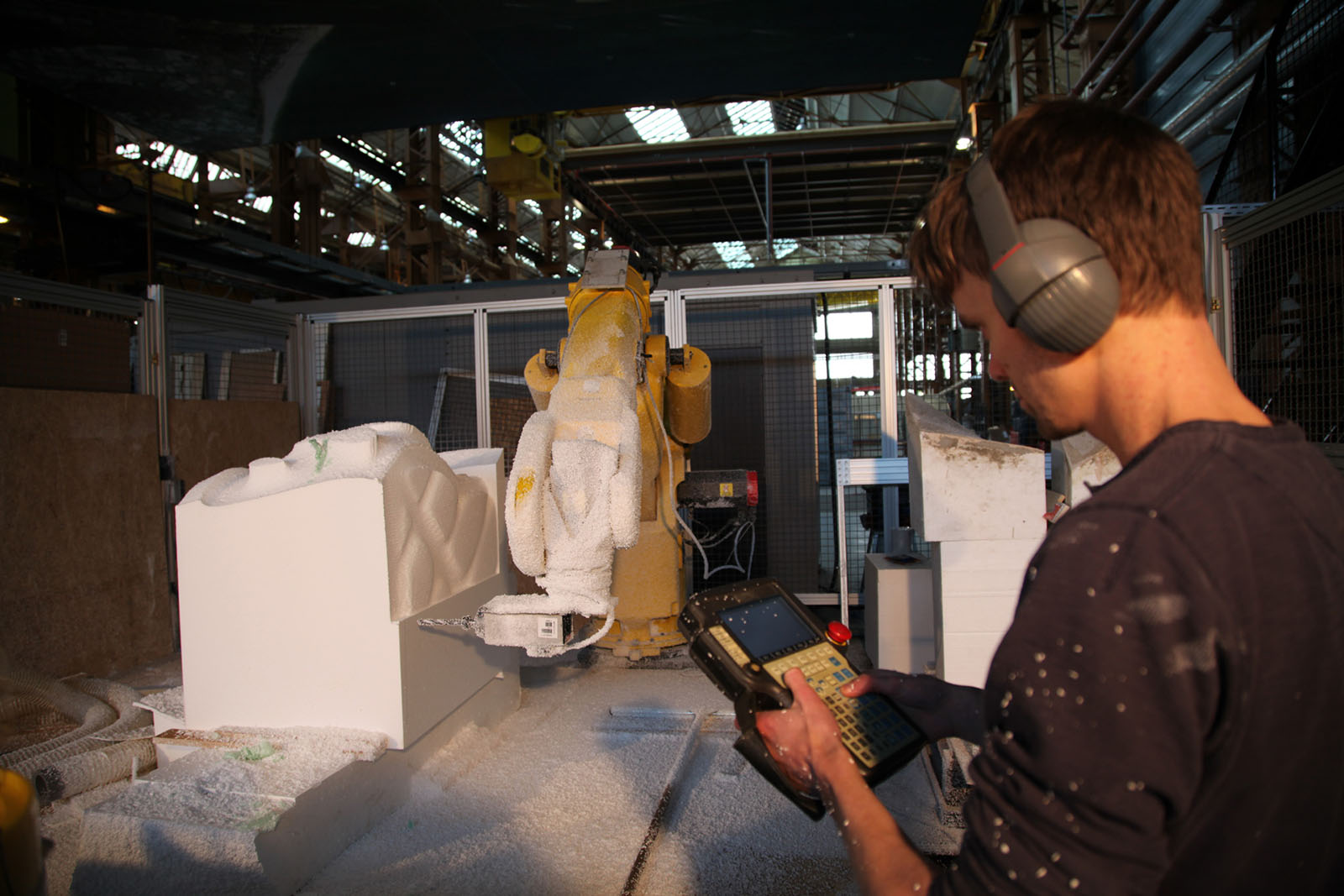Downloads
DOI:
https://doi.org/10.7480/spool.2014.2.933Abstract
Robotically Driven Construction of Buildings (RDCB) is an exploration into design to production solutions for robotically driven construction of buildings initiated by the faculties of Civil Engineering and Architecture, TU Delft and Architecture, TU Eindhoven and implemented 2014 within the 3TU Lighthouse framework. The aim of was to involve the disciplines of architecture, robotics, materials science, and structural design in order to integrate knowledge from the individual disciplines and develop new numerically controlled manufacturing techniques and building-design optimisation methods for adding creative value to buildings in a cost-effective and sustainable way.
RDCB builds up on expertise developed at Hyperbody with respect to applications of robotics in architecture and this paper presents the contribution of the Robotic Building team from Hyperbody, Faculty of Architecture, TU Delft to the RDCB project. The contribution is in line with Europe’s aim to improve material and energy efficiency of buildings and efficiency of construction processes. Robotically driven construction and customised building materials have the potential to realise this in a cost-effective way and at the same time reduce accidents and health hazards for workers in the building sector. In order to achieve this RDCB is distributing materials as needed and where needed. This requires exploration of a variety of techniques and implies working with customised materials and techniques while finding the best methods of applying materials in the logic of specific force flows or thermal dissipation patterns.
RDCB advances multi- and trans-disciplinary knowledge in robotically driven construction by designing and engineering new building systems for the on-demand production of customisable building components (Bier, 2014). The main consideration is that in architecture and building construction the factory of the future employs building materials and components that can be on site robotically processed and assembled.
How to Cite
Published
License
Copyright (c) 2020 SPOOL

This work is licensed under a Creative Commons Attribution 4.0 International License.




